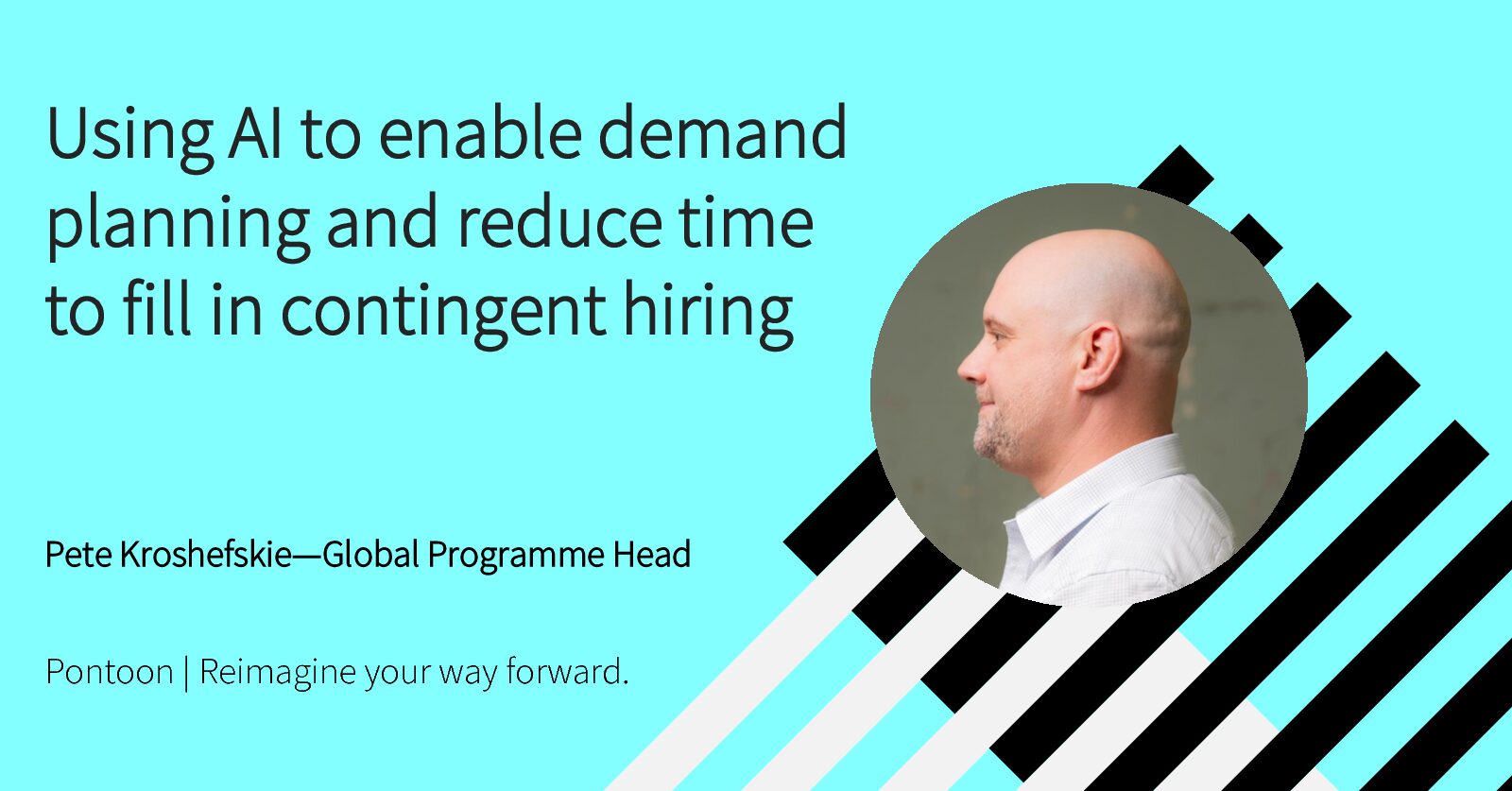5 things you need to know about AI in talent acquisition
Exciting advancements in generative AI are creating a buzz across all industries, and it’s no surprise that talent acquisition companies are keeping a close eye on these developments. Surveys reveal that an impressive 67% of HR professionals believe that AI can have a positive impact on the recruitment process. By automating repetitive tasks and learning from inputted data, AI has the potential to significantly enhance hiring processes.

Michelle Hall, Change Management and Training Specialist
Despite this, the rise of generative AI has also raised some valid concerns among talent acquisition professionals, who are eager to understand how it will impact their work. Some worry that AI may make their job obsolete or replace the essential human touch that is integral to the recruitment process.
In light of this, we’ve compiled a list of five things you need to know about AI in talent acquisition. By staying informed about the latest developments and leveraging the benefits of AI while maintaining a human touch, you can confidently navigate this rapidly-evolving field.
What is AI?
To answer this question, we first need to differentiate between three terms – robotic process automation (RPA), artificial intelligence (AI), and machine learning (ML) – since each has its own functionality and requires a different level of human intervention.
While RPA is designed to automate repetitive and tedious tasks, freeing up people’s time and allowing them to focus on more creative challenges, it can only operate according to pre-defined rules. By contrast, AI can learn from data and adapt to new tasks, improving over time. To do so, AI relies on various forms of machine learning. Predictive talent analytics (in which past data is used to predict future results) and natural language processing (leveraged to interpret human language) rely on machine learning.
What differentiates artificial intelligence from RPA is AI’s ability to make decisions and issue recommendations with less human input.
What is generative AI?
Contrary to other types of AI, generative AI not only recognises patterns and makes predictions based on data but also (as the name suggests) generates new content. Generative AI learns through something called generative adversarial networks (GANs). In this process, a “generator” creates new data and a “discriminator” evaluates it, making a distinction between real and fake data, and thus “teaches” the generator which one is which.
However, this learning process requires time, sufficient input of data, and a human-guided and ethical approach. Anyone who has experimented with ChatGPT knows that sometimes it produces answers that sound convincing but don’t make sense. The most significant limitations of generative AI today include creating content that is false, misinformed, biased, or prone to unethical or even criminal use.
What is AI in talent acquisition?
The implications of generative AI for talent acquisition are yet to be understood and developed. Certain sourcing tools and HR technology platforms (including Pontoon’s tech partners) have already announced incorporating generative AI into their features.
At Pontoon, we ensure our teams are up to date with all technical innovations as they appear on the market. Our sourcers, recruiters, and BI specialists are already embracing generative AI in their everyday work, using it to augment research, sourcing, and analysis of information (while using human judgement to sense check AI-generated content).
Pontoon has also substantial experience using tools powered by more “traditional” forms of AI. Some of the most common uses of AI in recruitment include:
Candidate outreach
AI tools help with targeted communication across social media and online platforms. Some of these tools can ensure that the wording of job ads is free from gender bias, which helps to attract female talent to traditionally male-dominated industries. When Pontoon was responsible for closing the gender gap for a technology customer, we invested in a tool specialising in text analysis to optimise job postings with verbiage that appeals to female candidates, allowing the customer to reach their gender quota goals.
Candidate assessment
AI-powered tests and video interviews with face recognition software can help recruiters get a sense of the candidate’s personality, confirming their intuitions and ensuring a good cultural fit with the company. Additionally, these tools can improve testing and validating candidate skills. When filling technical roles for a financial services customer, Pontoon implemented an assessment tool that used eye-tracking software to ensure test integrity and automatically ruled in and ruled out candidates. By leveraging technology, we hired 175 Java developers in just nine days.
Other AI assessment tools allow companies to bypass the traditional interview process, significantly decreasing time-to-fill rates. For example, when bulk-hiring contingent administrative workers, Pontoon leveraged a third-party assessment tool to prequalify, confirm, and onboard 200 supplier-identified candidates in less than four weeks.
Will AI replace HR professionals?
Research shows that 23% of talent acquisition professionals fear being replaced by AI, and only 15% believe that humans are essential to the recruitment process. However, Pontoon’s experience with AI-powered bots suggests this fear might be underfunded. As our Director of Talent Sourcing, Michael McCarthy observed, launching a sourcing bot as part of Pontoon’s RPA journey did not reduce the headcount – quite the contrary, it increased the number of sourcing experts almost ten times. With the right technology, human resources can work more effectively.
Of course, some concerns remain, considering that generative AI has the potential to learn how to make decisions and issue recommendations. However, I would argue that AI cannot entirely replace human touch.
This brings us to the last question:
What does AI lack that humans have?
As RPA champions, here at Pontoon we know that the human touch ensures the success of recruiters, candidates, and clients. As of today, we also perceive generative AI as a technology that helps people rather than replaces them. Based on today’s functions of generative AI, we know that it lacks certain core characteristics and values that fuel Pontoon’s services. These include:
Personalised approach: AI can analyse large amounts of data and make recommendations based on patterns, but it cannot provide the same level of personalised attention as humans. Pontoon can continue to offer a customised, people-first approach to its clients by assigning dedicated account managers to each client and building relationships with them.
Empathy and emotional intelligence: AI cannot understand and empathise with human emotions, which is essential in providing effective talent management solutions. Pontoon ensures that its employees have high emotional intelligence and empathy to better understand its clients’ and candidates’ needs and concerns.
Flexibility and adaptability: AI performs specific tasks and may struggle to adapt to unexpected situations that require innovation. Only human intuition and decision-making can fully ensure a flexible and adaptable approach to talent services.
Human judgement: Although AI can provide data-driven insights, it cannot replace human judgement entirely. As such, Pontoon continues to leverage the expertise and judgement of its employees to make informed decisions and provide value to its clients.
Final takeaway on AI in talent acquisition
It’s clear that AI has the potential to significantly improve and streamline certain aspects of talent acquisition. However, it’s important to remember that it can’t fully replace the vital human touch required to build strong relationships, understand unique needs, and provide personalised support to clients and candidates. As the industry continues to evolve and integrate new technologies, it’s crucial for talent acquisition professionals to strike a balance between leveraging the benefits of AI and maintaining the essential human element that is critical for success in this field.
Related Post
The pressing need to enhance contingent hiring efficiency
Employers are under pressure to fill contingent positions effectively in an environment of low unemployment and talent shortages. Having the right talent at ...




